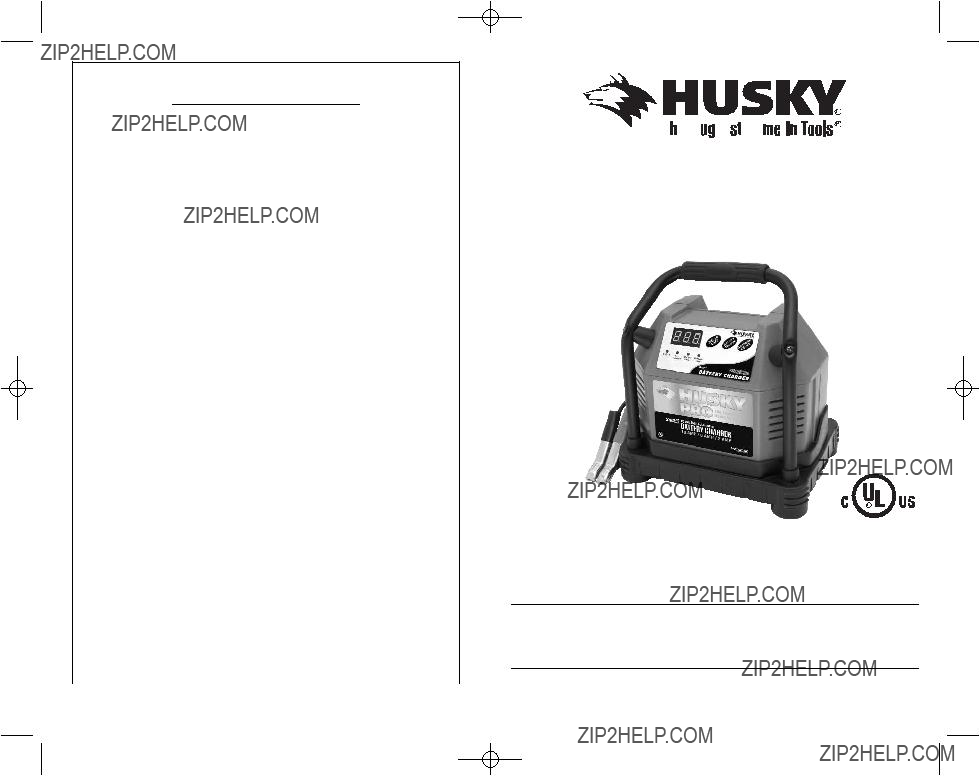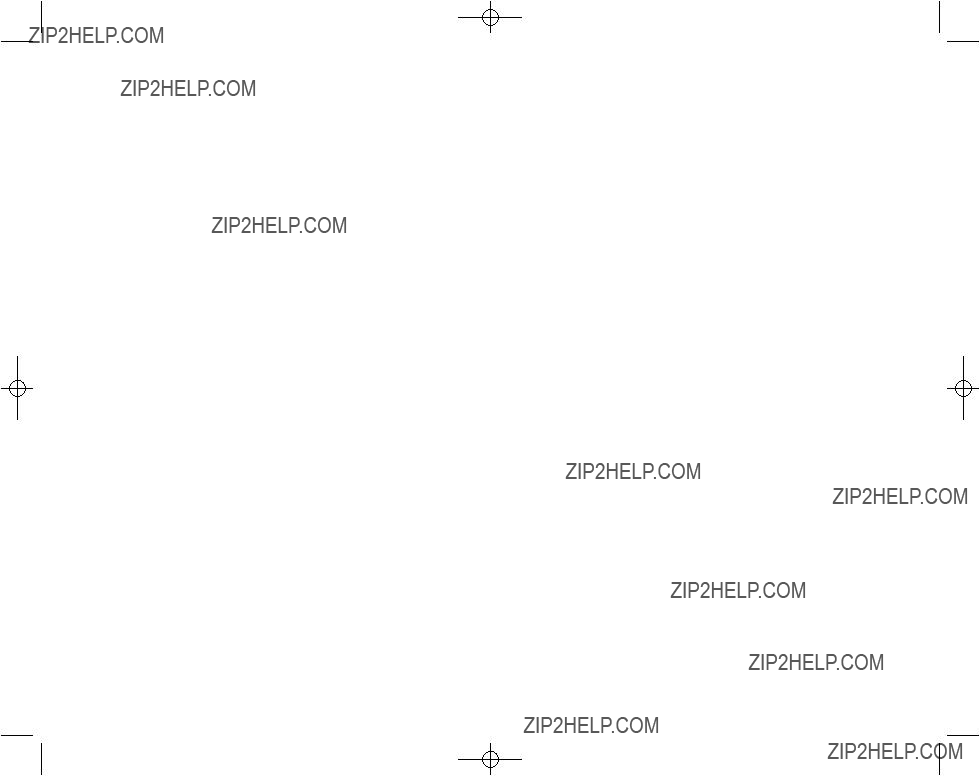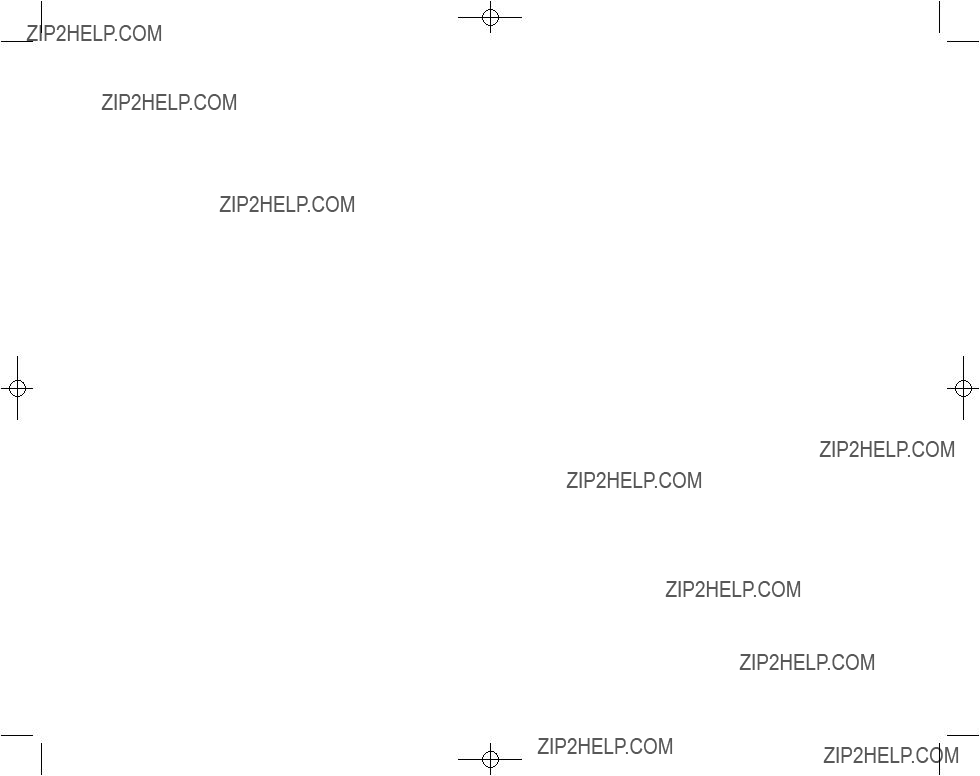HSK1084HD_Manual_062805.qxd 10/21/05 7:22 PM Page ii
IMPORTANT SAFETY INSTRUCTIONS
WARNINGS
1.RISK OF EXPLOSIVE GAS MIXTURES ??? WORKING IN VICINITY OF A LEAD-ACID
BATTERY IS DANGEROUS. BATTERIES GENERATE EXPLOSIVE GASES DURING
NORMAL BATTERY OPERATION. FOR THIS REASON, IT IS OF UTMOST IMPORTANCE
THAT EACH TIME BEFORE USING YOUR CHARGER, YOU READ THIS MANUAL AND
FOLLOW THE INSTRUCTIONS EXACTLY.
2.To reduce risk of battery explosion, follow these instructions and those published by the battery manufacturer and manufacturer of any equipment you intend to use in vicinity of battery. Review cautionary markings on these products and on engine.
3.This equipment employs parts (switches, relays, etc.) that produce arcs or sparks. Therefore, if used in a garage or enclosed area, the unit MUST be placed not less than 18 inches above the floor.
Battery Safety
1.Use of an attachment not recommended or sold by the battery charger manufacturer may result in
arisk of fire, electric shock, or injury to persons.
2.To reduce risk of damage to electric plug and cord, pull by plug rather than cord when disconnecting charger.
3.An extension cord should not be used unless absolutely necessary. Use of an improper extension cord could result in a risk of fire and electric shock, and will void warranty.
If an extension cord must be used, make sure:
a.that pins on plug of extension cord are the same number, size, and shape as those of plug on charger;
b.that extension cord is properly wired and in good electrical condition; and
c.that wire size is AWG#14 (14 gauge) for 100 feet and AWG#12 for distances over 100 feet.
4.Do not operate charger with damaged cord or plug ??? take to a qualified technician for replacement of the plug or cord immediately.
5.Do not operate charger if it has received a sharp blow, been dropped, or otherwise damaged in any way; take it to a qualified service technician.
6.Do not disassemble charger; take it to a qualified service technician when service or repair is required. Incorrect re-assembly may result in a risk of electric shock or fire, and will void warranty.
7.To reduce risk of electric shock, unplug charger from outlet before attempting any maintenance or cleaning. Turning off controls without unplugging will not reduce this risk.
8.Do not expose charger to rain, snow or use when wet.
Personal Safety
1.Another person should be within range of your voice or close enough to come to your aid when you work near a lead-acid battery.
2.Fresh water and soap should be nearby in case battery acid contacts skin, clothing, or eyes.
3.Wear complete eye protection and clothing protection. Avoid touching eyes while working with a battery. Acid, acid particles or corrosion may get into eyes. Immediately flood eye with cold water (Eye Wash Station) for at least 15 minutes and seek medical attention immediately.
4.If battery acid contacts skin or clothing, wash immediately with soap and water. If redness, pain or irritation occurs, seek immediate medical attention.
5.NEVER smoke or allow a spark or flame in vicinity of battery or engine.
6.Be extra cautious to reduce the risk of dropping a metal tool onto battery. This might cause sparks or short-circuit the battery or other electrical part, which can cause an explosion.
7.Remove personal metal items such as rings, bracelets, necklaces and watches when working with a lead-acid battery. A lead-acid battery can produce a short-circuit current high enough to cause a severe burn.
8.Use charger for charging a LEAD-ACID battery only. It is not intended to supply power to a low- voltage electrical system other than in a starter-motor application. Do not use the battery charger for charging dry-cell batteries that are commonly used with home appliances. These batteries may burst and cause injury to persons and damage property.
9.NEVER ATTEMPT TO CHARGE A FROZEN BATTERY.
Power Cord Safety
This appliance has a polarized plug (one blade is wider than the other) as a safety feature. This plug will fit into a polarized outlet only one way. If the plug does not fit fully into the outlet, reverse the plug. If it still does not fit, contact a qualified electrician. Do not attempt to defeat this safety feature.
Preparing to Charge
1.Determine voltage of battery to be charged by referring to the vehicle manual.
2.If it is necessary to remove battery from vehicle to charge, or to clean terminals, always remove grounded terminal from battery first. Make sure all accessories in the vehicle are off, so as not to cause an arc.
3.Clean battery terminals. Do not allow corrosion to come in contact with eyes.
4.Add distilled water in each cell until battery acid reaches level specified by battery manufacturer. This helps purge excessive gas from cells. Do not overfill. For a battery without cell caps (maintenance free), carefully follow manufacturer's charging instructions.
5.Study all battery manufacturer???s specific precautions, such as removing or not removing cell caps while charging, and recommended rates of charge.
6.Area around battery should be well ventilated while battery is being charged. Gas can be forcefully blown away by using a piece of cardboard or other nonmetallic material as a fan.
7.Make sure the initial charging rate does not exceed battery manufacturer???s requirement.
Charger Location
1.Locate charger as far away from battery as cables permit.
2.NEVER place charger directly above battery being charged; gases from battery will corrode and damage charger.
3.NEVER allow battery acid to drip on charger when reading gravity or filling battery.
4.NEVER operate charger in a closed-in area or restrict ventilation in any way.
5.Marine batteries must be removed and charged on shore.
6.Do not set a battery on top of the charger.
DC Connection Precautions
1.Connect and disconnect DC output clamps only after removing AC cord from electric outlet.
2.Never allow clamps to touch each other.
3.Attach clamps to battery post and chassis as indicated in ???Battery Installed in Vehicle??? steps 5 and 6, and in ???Battery Outside of Vehicle??? steps 2, 4 and 5.
Follow these steps when the battery is installed in a vehicle to reduce risk of sparks (which can cause an explosion):
1.Position AC and DC cords to reduce risk of damage by hood, door, or moving engine part.
2.Stay clear of fan blades, belts, pulleys, and other parts that can cause injury to persons.
3.Check polarity of battery posts. POSITIVE (POS, P, +) battery post usually has larger diameter than NEGATIVE (NEG, N, ???) post.
4.Determine which post of battery is grounded (connected) to the chassis. If NEGATIVE post is grounded to chassis (as in most vehicles), see 5. If POSITIVE post is grounded to the chassis, see 6.
5.For negative-grounded vehicle, connect POSITIVE (RED) clamp from battery charger to POSITIVE (POS, P, +) ungrounded post of battery. Connect NEGATIVE (BLACK) clamp to vehicle chassis or engine block away from battery. Do not connect clip to carburetor, fuel lines, or sheet-metal body parts. Connect to heavy gauge metal part of the frame or engine block.
6.For positive-grounded vehicle, connect NEGATIVE (BLACK) clamp from battery charger to NEGATIVE (NEG, N, ???) ungrounded post of battery. Connect POSITIVE (RED) clamp to vehicle chassis or engine block away from battery. Do not connect clip to carburetor, fuel lines or sheet- metal body parts. Connect to a heavy gauge metal part of the frame or engine block.
7.When disconnecting charger, disconnect AC cord, remove clamp from vehicle chassis, and then remove clamp from battery terminal.
8.Do not charge the battery while the engine is operating.
9.See Operating Instructions for length of charge information.
Follow these steps when the battery has been removed from a vehicle. A spark near the battery may cause an explosion. To reduce risk of a spark near the battery:
1.Check polarity of battery posts. POSITIVE post (marked POS,P, +) usually has a larger diameter than the NEGATIVE battery post (marked NEG, N, ???).
2.Attach a 24-inch (minimum length) 6 AWG insulated battery cable to the NEGATIVE battery post (marked NEG, N, ???).
3.Connect the POSITIVE (RED) battery clamp to the POSITIVE battery post (marked POS, P, + or red).
4.Stand as far back from the battery as possible, and do not face battery when making final connection.




 WARNING
WARNING
 WARNING
WARNING
 WARNINGS
WARNINGS